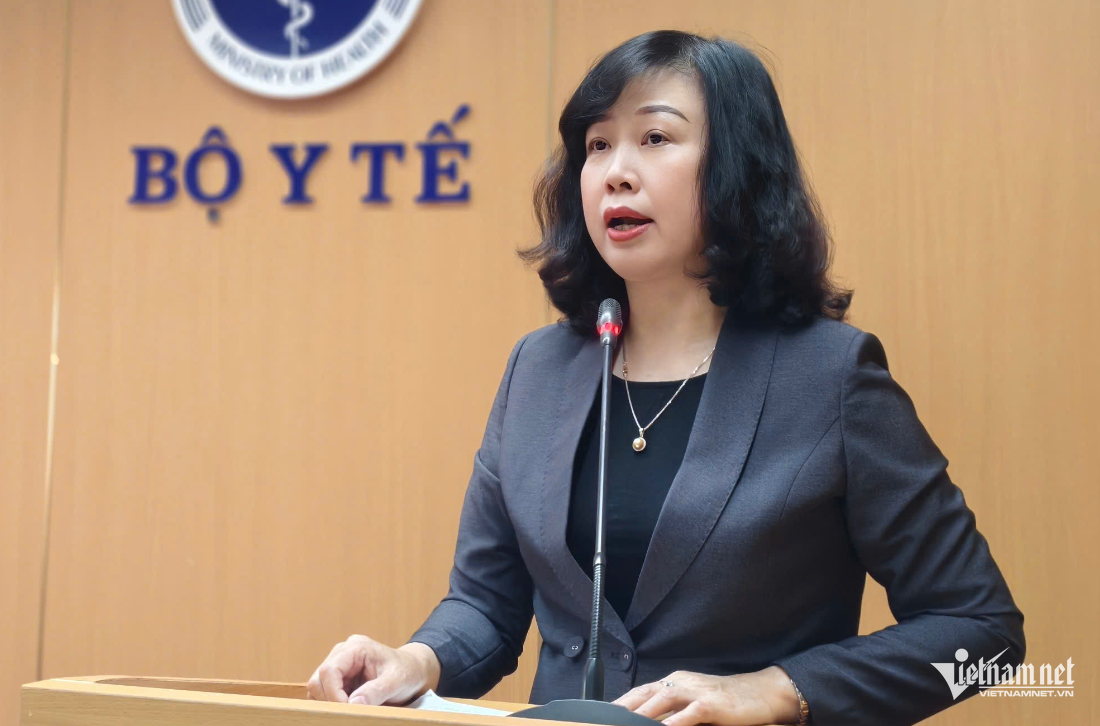
At a nationwide online conference on May 23 about the campaign against smuggling, commercial fraud, and counterfeit goods in the healthcare sector, a representative from C03 under the Ministry of Public Security, reported that six cases involving over 100 defendants in the production and sale of counterfeit food products have been prosecuted this year.
No quality checks
Tran Quang Hien, Director of the An Giang Health Department, noted that there were significant gaps in the post-inspection process. With limited manpower, localities can only inspect a small number of businesses, and most operate under a self-declaration mechanism, which cannot guarantee genuine product quality.
In Hoa Binh, a hotspot for a fake milk case in early April, Bui Thu Hang, Director of the Hoa Binh Health Department, said that in 2024, 15 inspection tours to 235 facilities discovered only three violations. Inspections and sampling only focused on microbiological indicators, with no quality checks, making it impossible to identify counterfeit goods.
"We only focused on checking if production facilities met conditions. Product quality checks were only conducted when there were public complaints," Hang said.
Businesses made product declarations in Hoa Binh but produce elsewhere and do not distribute in the province, thus causing difficulties for inspectors.
"In the recent fake milk production network, a company registered product declarations in Hoa Binh but produced elsewhere and did not sell in Hoa Binh," Hang noted.
The head of Hoa Binh's health sector said the department is forming three inspection teams to focus on product quality.
“But with such a large-scale inspections, it is difficult to find products that do not meet quality standards,” Hang said.
For many years, the province has established inspection teams, but counterfeiters are sophisticated, not selling products in supermarkets or stores but using e-commerce platforms and product introduction at seminars, making it difficult to inspect all suspicious products.
"Even if we suspect something, we may not dare act due to limited resources and funding for inspections," Hang explained. She added that the province cannot afford extensive inspections, as it deals not only with fake milk, drugs, and functional foods but also other products.
Health sector leaders from various provinces proposed that the Ministry of Health clearly define products and ingredients requiring mandatory declarations and periodic testing every six months or annually, with continuous quality maintenance and public disclosure on management systems.
The Hoa Binh Health Department also suggested amending Decree 15, forcing businesses to take full responsibility for products after market entry, while regulatory agencies focus on management as per current regulations.
Post-market entry inspection gaps
Lan, while repeatedly affirming that selling counterfeit goods is a crime, requested local authorities to be more proactive in checking and inspecting products, and not use the excuse of a lack of people or money.
If there are difficulties, they must report to the provincial leaders. If there is no report or proposal, the responsibility is blamed on the health sector.
According to the Minister, the draft amendment to Decree 15 will be submitted to the Government at the end of May and the beginning of June, focusing on decentralization and delegation of power to localities.
She pointed out that with just 3-5 officers inspecting tens of thousands of products, the task is not feasible. With over 2,000 inspectors nationwide, plus personnel from other units, claims of insufficient manpower are invalid. The issue lies in coordination and reorganization. High-risk products must be prioritized, with unannounced inspections rather than publicized ones.
The health sector leader called for stricter implementation of tasks related to licensing, renewals, product declaration acceptance, and inspections. Additionally, raising awareness among officials performing these tasks is crucial to prevent incidents like those at the Food Safety Department.
In practice, the probability rate of detecting violations during unannounced inspections in localities is quite high. For example, Tran Quang Hien, Director of the An Giang Health Department, reported that since early April, the provincial health sector has inspected 37 milk businesses (powdered milk, nutritional milk for children under 36 months), identifying five violations; inspected pharmaceuticals, cosmetics, and functional foods, finding 25 violations out of 86 facilities; and checked 43 food safety facilities, detecting nine violations. The total fines collected from these violations exceeded VND1.5 billion.
Tran Thuong